Working prototype engines
Negative Pressure Supercharging was developed on a Chrysler 360ci V8 and 245ci Hemi 6 cylinder and has been successfully working on these engines since 1997
 360 NPS prototype engine 360 NPS prototype engine
We started development of the Negative Pressure Supercharging process in October 1988 on a standard 1972 360ci Chrysler small block. This engine was used because of its mechanically simple and robust design. It allowed us to understand and develop the complex fluid and thermal dynamics of this new HTCSI supercharging combustion process without the interference of mechanical complexity and computers.
After many years of trial and error testing we succeeded in getting NPS to work on 10 December 1997. We found that by using high velocity tri-y headers with synchronised valve timing, NPS produced the huge low rpm torque and fuel mileage of turbocharged diesels. However, NPS used no air pump and produced much lower emissions. Peak horsepower also improved but the much faster
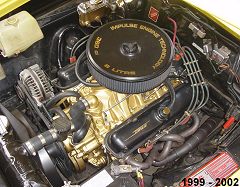 acceleration and better fuel mileage produced by the huge torque from idle made it easy to forget about peak horsepower. acceleration and better fuel mileage produced by the huge torque from idle made it easy to forget about peak horsepower.
The evolution of NPS is similar to the way today’s mechanically complex engines have evolved from mechanically simple engine designs. However, the major difference between these technologies is that NPS uses a new HTCSI supercharging combustion process instead of mechanical complexity to substantially improve the volumetric and thermal efficiency of engines. Development to improve the NPS process still continues today using the same 360 Chrysler small block. For more details see History
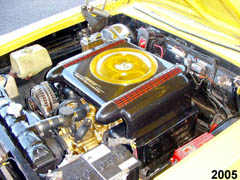 360 NPS prototype engine with Thermocharger 360 NPS prototype engine with Thermocharger
After 1997 we began to learn more about the unusual requirements of NPS. We found that the air induction temperature had a major influence on the burn rate of the larger intake charge pulled into the cylinder by NPS. During hot weather NPS produced neck snapping acceleration but ran sluggish during cold weather. The problem was the cold weather reduced the optimum burn rate of the larger intake charge which reduced power even though cold air is denser. As a result the cold weather made the larger intake charge more difficult to ignite.
Therefore, in 2001 we built the first prototype hot air induction system for the 360 Chrysler small block. It was a crude but effective engine cover (not shown) that collected heat from the exhaust headers and had a dome shape similar to the engine cover used on the 245 Chrysler Hemi 6 cylinder below. The engine cover was used during cold weather and removed during hot weather. This allowed the engine to produce the optimum burn rate with NPS during different outside temperatures. It also helped us find the optimum hot air induction temperature.
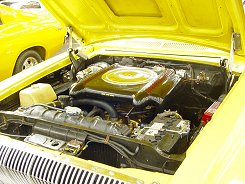 However, the V8 engine cover was impractical for normal use. This led us to develop the V8 Thermocharger in 2003 which is a thermostatically controlled air cleaner housing that maintains the optimum hot air induction temperature during all weather conditions. At the same time we also developed a cold cooling system to maintain the optimum combustion temperature and burn rate with hot air induction. This prevented pre-ignition (pinging) with hot air induction and allowed the air induction temperature to be increased further to just before the point of self ignition. This created the more efficient HTCSI supercharging combustion process and produced even more power. However, the V8 engine cover was impractical for normal use. This led us to develop the V8 Thermocharger in 2003 which is a thermostatically controlled air cleaner housing that maintains the optimum hot air induction temperature during all weather conditions. At the same time we also developed a cold cooling system to maintain the optimum combustion temperature and burn rate with hot air induction. This prevented pre-ignition (pinging) with hot air induction and allowed the air induction temperature to be increased further to just before the point of self ignition. This created the more efficient HTCSI supercharging combustion process and produced even more power.
Features of the 360 NPS prototype engine
The 360 Chrysler small block was fully rebuilt in 1988 using a standard 360 block, crank, con-rods, bolts and standard 318 heads and 4BBL intake manifold.
Included in the rebuild was NPS headers, cam, valve timing and ignition timing. The 318 heads and 4BBL intake manifold were modified to the NPS specs. Also included in the rebuild was a number of high performance parts such as hi-volume oil pump, oil sump baffle plate, double roller timing chain set, cast-iron roller rockers, flat head stainless intake valves, positive valve stem seals and all the other performance parts used in the stage 4 Kit.
Additional parts were added to the system in 2003 such as the NPS Thermocharger hot air induction housing and cold cooling system. The following year the 318 heads and intake manifold was replaced with 360 heads and 4BBL intake manifold modified to the NPS specs which further increased torque from idle to peak rpm.
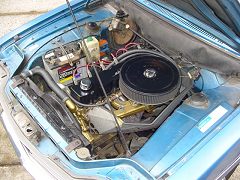 245 NPS prototype engine 245 NPS prototype engine
In 2000 we applied the Negative Pressure Supercharging process to a standard 1976 245ci Chrysler Hemi 6 cylinder. This was done to figure out the critical specs of NPS with smaller size engines and to bridge the gap between different size engines. After much trial and error testing, in 2002 we worked out a formula to allow NPS to be applied to any size engine from small 50ci Harleys to monster 1000ci Caterpillar engines.
However, NPS produced neck snapping acceleration with the 245 Hemi 6 during hot weather but ran sluggish during cold weather like with the V8. Therefore, in 2001 we built a prototype hot air induction system for the 245 Hemi 6. It was a simple 2 piece engine and exhaust cover (see photo’s) that collected heat from the exhaust headers. The top section had a dome shape similar to the V8 engine cover. The 6 cylinder engine and exhaust covers were used during cold weather and the engine cover only was removed during hot weather like was done with the V8 engine cover. This allowed the engine to produce the optimum burn rate with NPS during different outside temperatures.
 The 6 cylinder engine and exhaust covers also helped us find the optimum hot air induction temperature like with the V8 engine cover but they’re impractical for normal use. Therefore, the 6 cylinder Thermocharger will be a thermostatically controlled air cleaner housing that maintains a hot air induction temperature during all weather conditions like the V8 Thermocharger housing. The 6 cylinder engine and exhaust covers also helped us find the optimum hot air induction temperature like with the V8 engine cover but they’re impractical for normal use. Therefore, the 6 cylinder Thermocharger will be a thermostatically controlled air cleaner housing that maintains a hot air induction temperature during all weather conditions like the V8 Thermocharger housing.
Features of the 245 NPS prototype engine
The 245 Hemi 6 cylinder was fully rebuilt in 2000 using a standard 245 block, crank, con-rods, bolts and heads and the intake manifold was modified to a 4BBL.
Included in the rebuild was NPS headers, cam, valve timing and ignition timing. The 245 heads and 4BBL intake manifold was modified to the NPS specs. Also included in the rebuild was a number of high performance parts such as oil sump baffle plate, double roller timing chain set, aluminium roller rockers, 3/8" pushrods, flat head stainless intake valves, positive valve stem seals and all the other performance parts used in the stage 4 Kit.
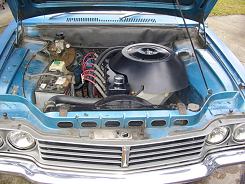 245 NPS – Rex Killer! 245 NPS – Rex Killer!
The prototype 245 NPS Hemi 6 cylinder stage 4 produces such a huge increase in low rpm torque, it makes a 1976 Chrysler Centura (Chrysler Cricket in the USA) produce faster acceleration and more fuel mileage than a 2001 Subaru WRX with a turbocharged 122ci (2L) 4 cylinder. Yet the Centura is NOT equipped with all the racing gear of the Subaru needed to produce faster acceleration.
For example,
The 1976 Chrysler Centura uses a mechanically simple engine with 2 valves per cylinder, flat-tappet cam, 4BBL carburetor, 3 speed auto, 2.9 diff ratio, 2WD and NO gear multiplication. Whereas the 2001 Subaru WRX uses a mechanically complex turbocharged engine with 4 valves per cylinder, 4 roller cams, computers, fuel injection, 5 speed manual, 3.9 diff ratio, 4WD, gear multiplication and a formula 1 race team to change the tyres. For more details see Performance Comparison
| Impulse Engine Technology
P/L |
PO Box 986 Randwick NSW 2031 Australia
Ph: (02) 9398 5544
Fax: (02) 9398 5644
International: Ph: +(612) 9398 5544
Fax: +(612) 9398 5644
Email Us
Inventor of Negative Pressure Supercharging
|
|


